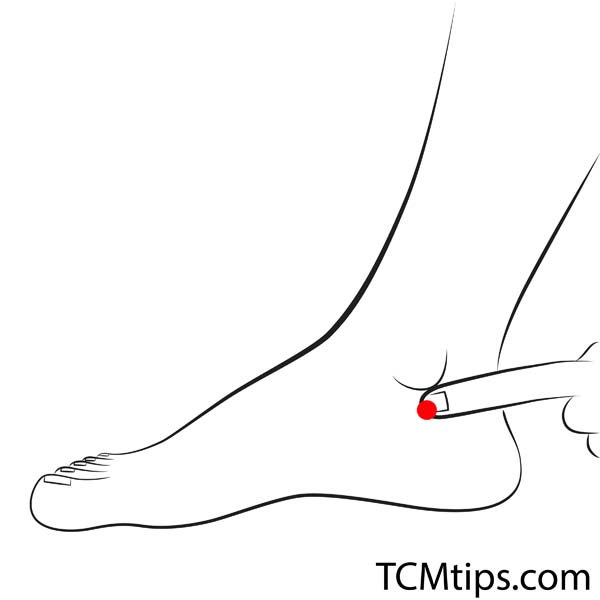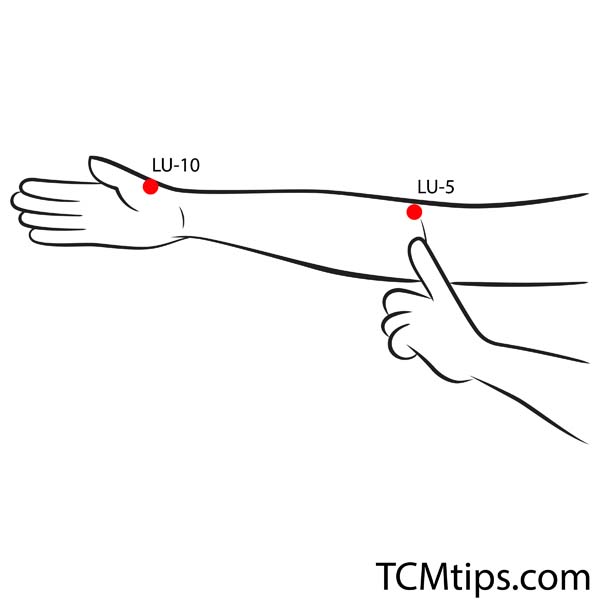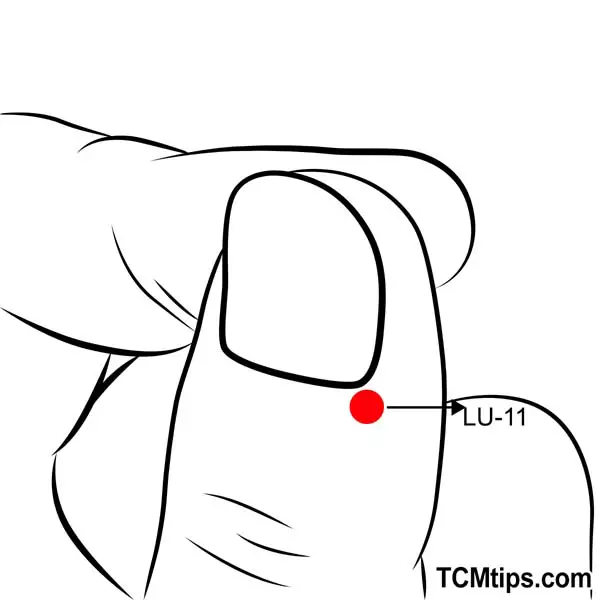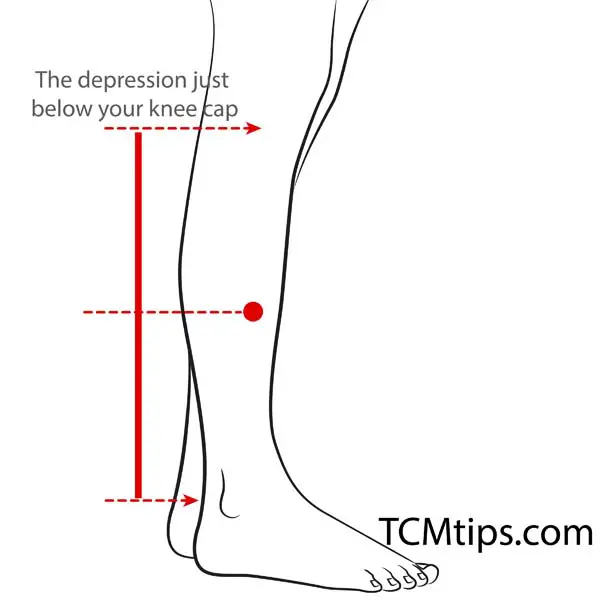Vocal cord disorders are mostly caused by the abuse or misuse of your vocals. In Traditional Chinese Medicine (TCM), however, vocal cord issues are related to lung function. Therefore, when external pathogens such as wind and heat invade the lungs, it causes problems for the throat. Also, poor circulation of blood and Qi to the lungs affect speaking, breathing, and swallowing. To resolve this, TCM uses the acupressure points for vocal cords to expel external pathogens, replenish Qi and blood, and relieve other symptoms of vocal cord disorders.
What Are Vocal Cord Disorders?
Vocal cord disorders are any issue, whether functional or structural, that affects the vocal cord or vocal folds, as it is also called. The vocal cords are two in every human, and they are bands of smooth muscle tissue located in the larynx or voice box. They are responsible for the sound you make.
There are a number of vocal cord issues but below are three of the most common types:
- Laryngitis: This is inflammation of the vocal cord that causes your voice to sound hoarse or raspy.
- Vocal Nodules: These are calluses that aren’t cancerous that often grow on both vocal cords, thus making your voice to be hoarse, low, and breathy.
- Vocal Cord Paralysis: This is a situation whereby your vocal cords can’t open or close properly. It is often caused by an injury sustained on the neck or surgery, and when it happens, you may be unable to speak, breathe or eat properly.
As there are different kinds of vocal cord disorders, so are the different causes and symptoms specific to each. However, most vocal cord issues are caused by abuse or misuse of vocals, such as singing too loud, yelling, coughing too hard, or smoking. The symptoms of vocal cord disorder range from hoarse or raspy voice and low breathy voice to inability to swallow.
Can Acupuncture Help With Voice Problems?

Yes, acupuncture is very effective for voice problems and there are several research to support this. One such research was cited in a 2017 study whereby a group of researchers tested the effectiveness of acupuncture in treating phono traumatic dysphonia. Twenty-four (24) subjects completed this test, and they were placed in either of two groups – the treatment group and the placebo group.
The treatment group received acupuncture at acupoints that are related to the voice, such as St-9, LU-7, and KD-6, whereas the placebo group received treatment at acupoints that are not related to the voice, such as SI-3 and Bl-60.
After 20 days of 10 acupuncture sessions of 30 minutes each, it was found that there was a significant improvement in vocal function, voice quality, and quality of life, based on voice-related activity, in the treatment group than in the placebo group. This proves that acupuncture for voice disorders is effective, especially when they are done on voice-related acupoints.
Acupressure Points For Vocal Cord
Now that we have established that acupuncture is effective for treating voice disorders let’s proceed to discuss the acupressure points for vocal cords.
Acupoint: ST-9 (Other Names: Stomach-9/Ren Ying/Man’s Prognosis)

St-9 or Renying, as it is called in Chinese, is a throat acupuncture point that serves effectively as acupuncture for vocal cord dysfunction. This Stomach meridian acupoint is located on both sides of the neck, just beside the highest point of Adam’s apple. You’ll find it on a stretch of muscle where the carotid artery pulsates.
In TCM, the function of St-9 is to treat issues of the throat and neck by regulating Qi and blood and defeating rebellious Qi. Massaging this pressure point in the neck is most effective for treating polyps and vocal cord nodules, while it is also used clinically to treat sore throat, asthma, and hypertension.
Acupoint: LU-7 (Other Names: Lung-7/Lie Que/Broken Sequence)

LU-7 or Lieque, in Chinese, is one of the acupressure points for vocal cords that are not located on the neck. Instead, this lung meridian acupoint is found on the arms. To locate it, interlace your hands by joining the web between the thumb and forefinger of one hand with the other. The small notch between two tendons where the tip of the forefinger rests is Lu-7.
In Oriental medicine, LU-7 is responsible for expelling exterior wind, assisting the Lung Qi to improve the functions of the lungs, and resolving issues of the head and neck. This is why LU-7 is mostly used to treat sore throat, migraines, and facial paralysis, while also serving as acupuncture for tendonitis in the hand.
Acupoint: KD-6 (Other Names: Kidney-6/Zhao Hai/Shining Sea)

KD-6 is another non-voice-related acupoint that serves as acupuncture for singers. Called Zhaohai in Chinese, this acupoint is located on the feet. You’ll find it in the depression just below the tip of the inner ankle bone.
In TCM, KD-6 is regarded as one of the best points for nourishing the kidney tin, a vital blood component of the kidney. While it serves to clear heat deficiency and calm the Shen, it is a special acupoint for treating throat and eye disorders. In addition, it is one of the acupressure points for menstrual cramps, irregular menstruation, dry and sore throat, and epilepsy.
Acupoint: LI-4 (Other Names: Large Intestine-4/He Gu/Joining Valley)

LI-4 or Hegu as it is called in Chinese, is a popular acupoint for head and face issues. It s one of the acupuncture points for a hoarse voice that you don’t want to forget. This large intestine acupoint is located on the hand, in the fleshy web between the thumb and forefinger.
Hegu is effective in relieving symptoms of throat issues. Massing this pressure point will ease throat inflammation, hoarseness of voice, blocked throat, and cough. This makes it one of the effective acupuncture points for vocal cord paralysis, while also serving as one of the acupressure points for speech development.
Because LI-4 also regulates the autonomic nervous system, thereby stimulating calmness, it is used as pain relief for all kinds of pain, including toothache, abdominal pain, and eye pain.
Acupoint: LU-5 (Other Names: Lung-5/Chi Ze/Cubit Marsh)

LU-5 is another lung meridian acupoint that serves as acupuncture for voice disorders. It s called Chize in Chinese, which means Cubit Marsh. You’ll find Chize at the outer border part of the elbow crease on a tendon referred to as m. biceps brachii.
Its major function relating to voice disorder is to clear lung heat, assist the descending action of the lung qi, and clear the lung of phlegm. This makes it one of the acupuncture points for phlegm. Meanwhile, based on its location and function, Chize is effective for treating pains in the elbow and arms, cough, asthma, and vomiting. It also serves as one of the acupressure points for cold.
Acupoint: LU-11 (Other Names: Lung-11/Shao Shang/Lesser Metal)

LU-11 or Shaoshang is another of the acupuncture points for loss of voice that you shouldn’t forget. Like the other lung meridian acupoints discussed so far, LU-11 is located on the hands. You’ll find this acupoint at the bottom corner of the nail at the outer edge of the thumb.
The function of LU-11 in TCM is to cool the lungs, clear heat, treat issues of the throat, and revive patients after fainting. This is why LU-11 is among the acupressure points to relieve anxiety attacks while also serving as acupuncture for fever, cough, and sore throat.
Acupoint: ST-40 (Other Names: Stomach-40/Feng Long/Abundant Bulge)

ST-40 or Fenglong is another stomach meridian acupoint that serves as acupuncture for vocal cord dysfunction. To locate ST-40, place the pinkie finger of one hand at the bottom of your knee joint and spread your thumb across your lower leg, then place the pinkie of your other hand on the tip of your outer ankle bone and spread the thumb to meet the other thumb. The point where the two thumbs meet is ST-40. You’ll definitely need someone to massage this point for you.
In TCM, this acupoint is said to hold the phlegm in the body. Therefore, it functions as a point to resolve phlegm on any part of the body, stop wheezing, and calm the Shen. For this reason, ST-40 serves as one of the acupressure points for mucus in the throat, an acupressure point for eye infection, and acupuncture for cough, asthma, and weakness of the lower extremities.
Acupoint: Ren-23 (Other Names: The Conception Vessel-23/Lian Quan/Lateral Spring)

The last of the acupressure points for vocal cords is Ren-23. It is called Lianquan in Chinese and is located in the hollow of the bone under the chin, in the midline of the throat, and slightly above Adam’s apple.
Based on its location, Ren-23 assists in the secretion of saliva. So, when your voice is hoarse because your throat is dry, Ren-23 is the right acupoint to massage. Acupuncture on this acupoint is one of the effective acupuncture treatments for spasmodic dysphonia.
In addition to boosting saliva secretion, Ren-23 serves as one of the acupressure points for throat inflammation, bad breadth prevention, and difficulty in swallowing.
Can Acupuncture Help With Paralyzed Vocal Cord?
Vocal cord paralysis is one of the more threatening vocal cord disorders whereby the muscles of the vocal are unable to move. It could be unilateral, affecting one vocal cord, or bilateral, affecting both vocal cords. Chinese acupuncture for vocal cord paralysis is one of the most effective treatments for vocal cord paralysis. What it does is open up the congested throat caused by vocal cord paralysis. It also regulates the autonomic nervous system and releases a calming effect on you.
One study supports the use of acupuncture for the paralyzed vocal cord. This study was carried out on 14 patients who had unilateral paralysis of the recurrent laryngeal nerve. These patients were given a combined treatment therapy of acupuncture, phonopedics, respiratory muscle gymnastics, and prozerin administration. This therapy proved to be effective as the patients were able to recover their vocal function. 11 of them recovered within 2 to 3 weeks, while the remaining 3 recovered within 2 to 3 months.
Does Acupuncture Work For Spasmodic Dysphonia?

Spasmodic dysphonia is a more complicated voice disorder. It is a kind of voice disorder whereby the voice breaks and produces a strangled sound due to the involuntary spasms in the muscles of the voice box. In mild cases, you may have trouble saying a couple of words, but in extreme cases, you may be unable to talk at all. Western medicine does not know the actual cause. Researchers can only suggest that it is a form of central nervous system disorder, which makes acupuncture for voice disorders the ideal treatment.
A 2014 research on 270 patients with post-stroke spasmodic dysphonia provides proof of this. The researchers divided the patients into three groups to test for the efficacy of acupuncture combined with speech rehabilitation training for treating spasmodic dysphonia. Group one was for acupuncture combined with speech rehabilitation; group two was for acupuncture alone, and group three was for speech rehabilitation alone. Acupuncture was administered at GV-20, EX-HN12, and EX-HN 13 for group two.
At the end of the trial, Group one had an overall effective rate of 94.3%, Group two had 81.4%, and Group Three had 61.2%, supporting the hypothesis that it is best to combine acupuncture with speech rehabilitation therapy to treat spasmodic dysphonia.
Does Acupuncture Help Muscle Tension Dysphonia?
Muscle Tension dysphonia is one of the vocal cords disorder that simply implies a change in the sound of your voice. This is usually due to excessive muscle tension in and around the voice box. When this happens, your voice may sound weak or breathy, strained or tight, or you may have a rough or hoarse voice. Intensive acupuncture therapy usually helps to rectify this issue.
An article that talked extensively about treating throat and voice disorders with Chinese Medicine provides proof of the use of acupuncture points for vocal cords. According to this article, when you apply acupuncture on pressure points on the neck, it will promote the flow of blood and qi in that region, thus releasing the tension on the muscles there. It also recommended acupuncture on some pressure points outside the neck such as LI-4, LU-5, KD-6, and ST-40 to be effective in preventing vocal cord disorders that are mostly suffered by musicians or actors.
The article also credited the use of massage therapy (acupressure) on points where acupuncture is not practical. It is on this note that we will proceed to discuss the acupressure points for vocal cords that you can easily push once you start manifesting the symptoms of vocal cord disorders.
Conclusion
Voice disorders are issues that affect the voice vocal cords, which are the organs responsible for the sounds we make. Some of these vocal disorders include vocal cord paralysis, spasmodic dysphonia, and muscle tension dysphonia. So far, acupuncture is one of the most effective cures for vocal disorders. To bring relief to symptoms of vocal cord issues, push the following acupressure points for vocal cords:
- St-9 to regulate the blood and Qi in the neck and throat
- LU-7 to expel exterior wind and assist the lung functions
- KD-6 to resolve throat disorders by clearing heat and calming the Shen.
- LI-4 to release blocked throat and stop voice hoarseness and cough
- LU-5 to clear lung heat and resolve phlegm
- LU-11 to cool the lungs and treat issues of the throat
- ST-40 to resolve phlegm in the body and stop wheezing
- Ren-23 to resolve dry throat by assisting in secreting saliva to the throat.

Try our Anti-Aging Gua Sha Tool designed to bring out your skin’s natural glow.
Best Gua Sha Product- Anti-Aging: The tool is designed to target 11 specific aging signs such as wrinkles and sagging skin. By following the 7-step routine, users can improve skin firmness and reduce fine lines naturally.
- Enhances Skincare Routine: It works effectively with serums and lotions, boosting absorption and efficacy of skincare products.
- Visible Skin Improvement: Users can expect a smoother complexion, reduced puffiness, and a more youthful appearance.
 P. Sze
P. Sze 

















